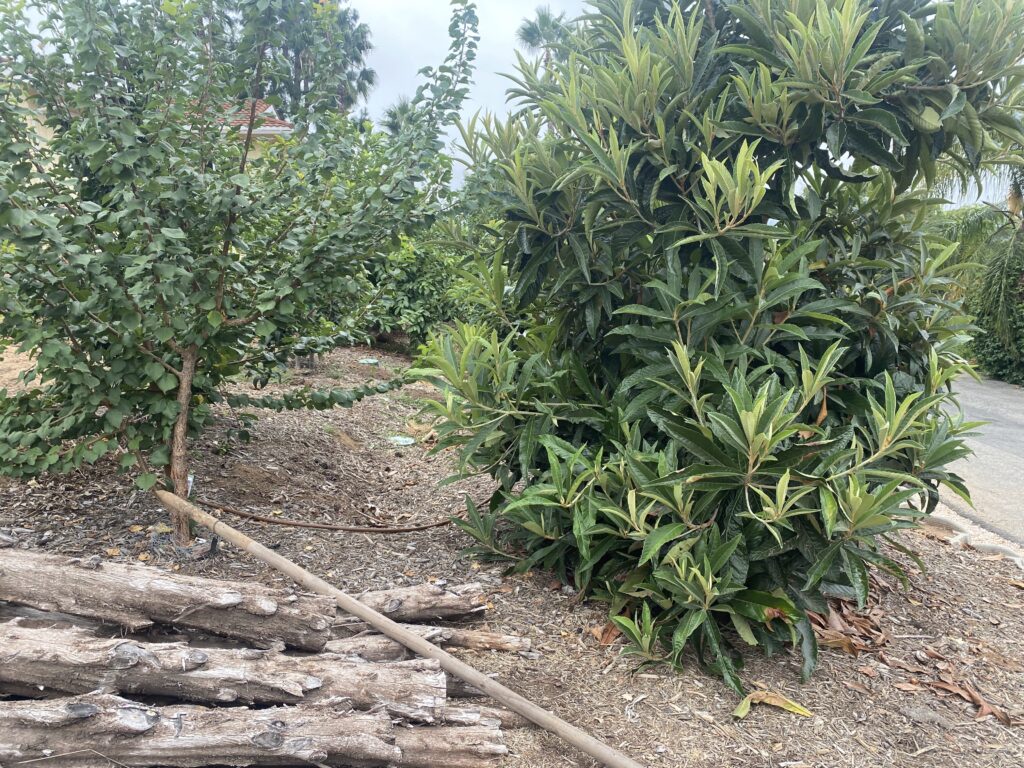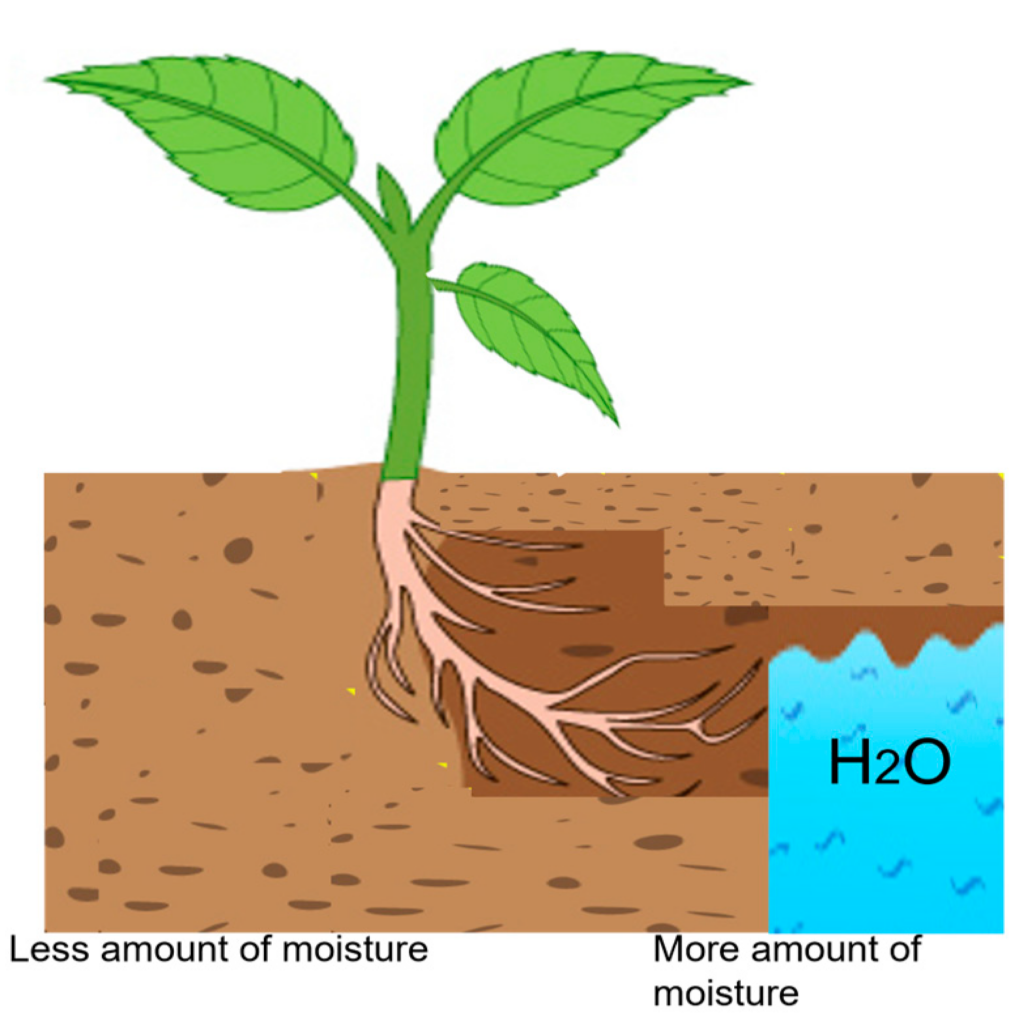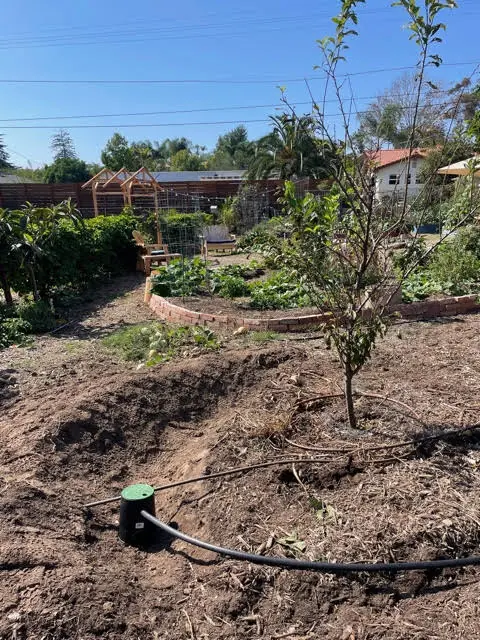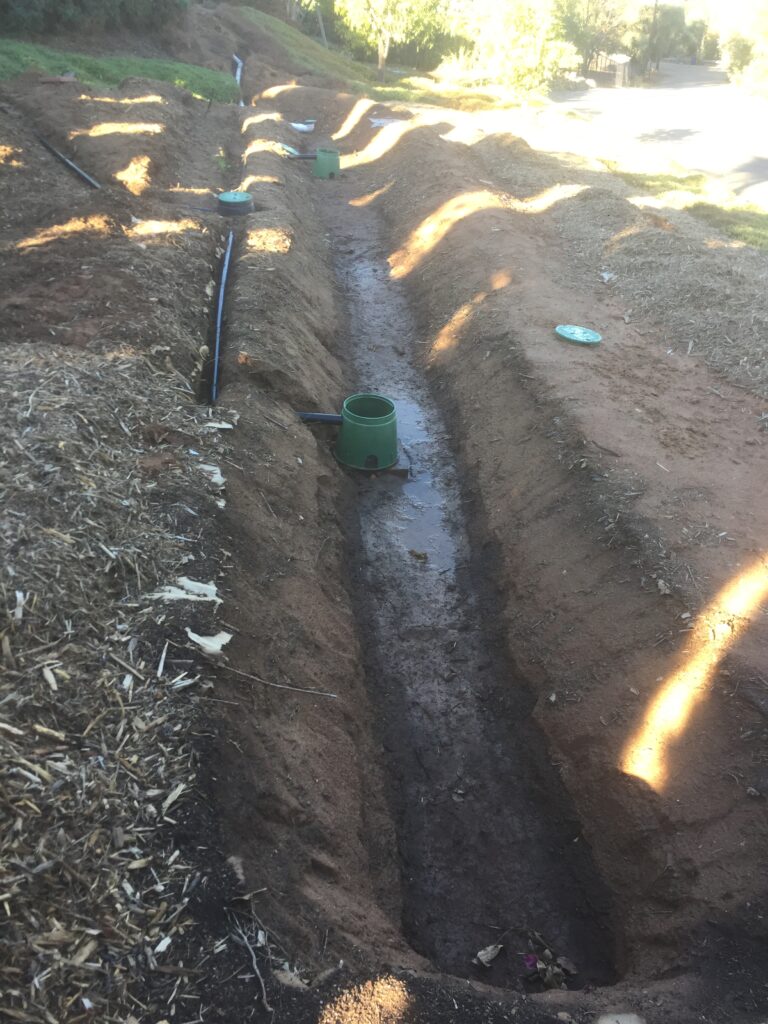With over 15 years of experience in irrigating Southern California yards with Greywater we know what plants work well with greywater and which ones don’t. Find a short list at the bottom, but read this article to understand better how to decide whether to use certain plants or not in your particular situation
Isn’t greywater icky?
Greywater DOES have bacteria. Even if it’s just “warm up water in the shower before you get in”. This is because there is bacteria in your waste pipes, bacteria coming off our body, off our clothes, etc. We don’t want to come in contact with this bacteria which is why we don’t use greywater to surface flow onto a lawn or other ground cover, we don’t surface flow greywater down a slope or into a public right of way like a canyon or a storm drain, and we NEVER store greywater more than 24 hours. Read more about greywater dos and don’ts in Chapter 15 of the California Plumbing Code or one of the first local regulations for the City of San Diego.
What about the soaps?
Soaps often have ingredients that include Nitrogen, Potassium, and Phosphate. Do those ingredients sound familiar?
These elements help fertilize your plants. So soaps are not ALL bad. However many soaps have a high level of sodium for several reasons. Salts help soften (hair, water, etc), Salts preserve, Salts help your soaps suds up which gives you the sense that things are really getting clean. But certain plants are sensitive to salts (even standard city water can be hard on your plants), and this is especially a problem if you have a heavy clay soil.
What to do:
- Choose products with the least amount of sodium listed and listed lower down in the ingredients list.
- Practice good soil health practices: add compost, mulch, include cover crops or types of plants that help break up soil
- If you have plants that are sensitive to salts, like avocado trees for example, consider distributing the greywater further from the plant’s drip line so that the water wicks toward the roots of the plant leaving behind the salts. The plants roots will ultimate grow toward the water source and it will be stronger because of it. This is known as hydrotropism.
- Direct rainwater downspouts or overflow from rainwater tanks into your basins to seasonally cleanse the soil.
Read more about what soaps work with greywater in our blog.
Soil type matters
Clay is made up of fine particles, whereas a sandy soil is made up of larger and finer particles. Much of our San Diego landscapes include heavy clay soil. Although some coastal locations have well draining sandy soil, and some of our eastern communitieshave some decomposed granite and boulders.
Compacted clay won’t allow salt particles to percolate through, so they tend to accumulate on the surface of the soil and prevent plants from up-taking moisture and nutrients effectively. Additionally, since the clay tends to inhibit drainage, some plants won’t do well in this environment because they don’t like their roots to be wet (avocados are a good example of this)
My trees and natives are supposed to be watered a VERY specific way, or ELSE!
Yes, we humans love to imagine we are in control of everything, including nature! But imagine those same plants and trees in their natural settings. They certainly aren’t receiving a controlled amount on a controlled timeframe. And they probably aren’t solely reliant on water to thrive.
Although experts will tell you that your fruit trees SHOULD ONLY be watered deeply once a week or once every other week, what we have found is that if fruit trees get the right amount of water on a weekly basis, they not only survive, they THRIVE. There are a few reasons this works:
- Greywater is more nutrient dense than city water.
- When we implement greywater systems we create shallow areas around the drip line of the tree that get flooded and fill these basins with mulch. This means that the plants are getting water down where there roots are AND we are consciously improving the soil and preventing evaporation by including the mulch.
Shallow depressions at the drip line (or future) dripline of the tree allow water to pool where the roots can access it. Filling these basins with mulch means no evaporation and enhanced soil health.
- Plants tend to get more water when we plan these greywater systems to account for actual water delivered weekly and match it to the plant needs than what we tend to deliver with our irrigation systems since many of us tend to be stingy with water
Before: Basin catches shower water and rainwater

After: 4 years later, with only greywater and seasonal rainwater, fruit trees thrive!
Experts will also tell you your natives should ONLY be watered with overhead spray. Well, natives may be one thing that doesn’t love greywater depending on which natives and your soil type. We find that if we develop our greywater distribution such that the plants find the water over time, rather than flooding the plants directly on the surface with greywater, natives do great and even thrive. But if you have greywater and you want a native garden, consider local riparian zone natives. These plants love soaking water up through their root systems and you can support a whole different eco system than standard drought tolerant natives.
What plants work great with greywater
- vines, shrubs, trees
- citrus trees
- banana trees
- most fruit trees
- traditional landscape plants like agapanthus, lillies, birds of paradise, salvias, lavenders, etc.
- riparian natives including sycamores, cottonwoods, willows, yerba mansa, four o’clocks, mulefat, etc
- some edible shrubs and vines if the edible part of the plant is further away from the water distribution (like grapes, blackberries, passion fruit)
- some annual crops whose fruit grows outside of the area where the water is distributed (corn, squash, tomatoes)
- bamboo
- podacarpus, eugenia and other standard privacy hedges
- clumping grasses
- irises, other bulbing flowers
What plants may need special considerations with greywater
- Plants that are sensitive to salts like avocado trees
- some natives
- Herbs that you will harvest to consume
What plants won’t work with greywater
- Leafy green vegetables
- root vegetables
- small herbs (like basil, mint) if you are going to harvest them for food
- low growing edibles like strawberries
- really hardy natives in some situations
- ultra drought tolerant succulents may not prefer the volume and quality of the water
- Plants that like acidic soil conditions like blueberries
- Plants that are sensitive to salts
- lawn or other ground covers
- oak trees don’t like too much water





